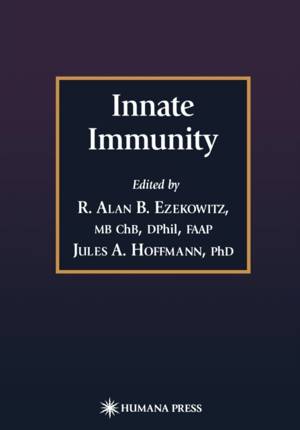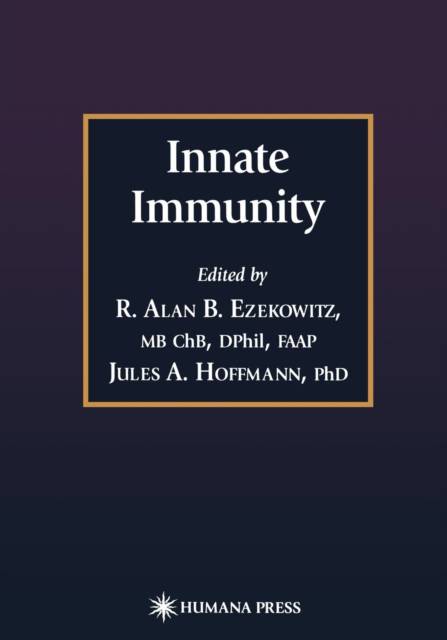
- Afhalen na 1 uur in een winkel met voorraad
- Gratis thuislevering in België vanaf € 30
- Ruim aanbod met 7 miljoen producten
- Afhalen na 1 uur in een winkel met voorraad
- Gratis thuislevering in België vanaf € 30
- Ruim aanbod met 7 miljoen producten
Zoeken
Omschrijving
The concept of innate immunity refers to the first-line host defense that serves to limit infection in the early hours after exposure to microorganisms. Recent data have highlighted similarities between pathogen recognition, signaling pathways, and effector mechanisms of innate immunity in Drosophila and mammals, pointing to a common ancestry of these defenses. In addition to its role in the early phase of defense, innate immunity in mammals appears to playa key role in stimulating the subsequent clonal response of adaptive immunity. Recent exciting information has determined that the templates that are laid down in primitive life forms, like flowering plants and insects, form the basic principles of first- line host defense that are conserved in mammalian systems. The next frontier in the field is to understand the dynamic adaptive changes that occur as a result of the inter- play between host defenses and infectious agents. One emerging theme is that microorganisms are constantly seeking ways to co-opt host defenses. On the other hand, host defense to infection is mediated by the coordinate action of pattern recognition molecules and receptors that, in mammals, are important and probably necessary antecedents to the development of an adaptive immune response. Innate Immunity aims to explore the intersection between host pathogen interactions across an evolutionary spectrum that will inform our understanding of the dynamic interplay between infectious agents and host defense in man.
Specificaties
Betrokkenen
- Uitgeverij:
Inhoud
- Aantal bladzijden:
- 410
- Taal:
- Engels
- Reeks:
Eigenschappen
- Productcode (EAN):
- 9781468497465
- Verschijningsdatum:
- 8/08/2012
- Uitvoering:
- Paperback
- Formaat:
- Trade paperback (VS)
- Afmetingen:
- 178 mm x 254 mm
- Gewicht:
- 730 g

Alleen bij Standaard Boekhandel
+ 518 punten op je klantenkaart van Standaard Boekhandel
Beoordelingen
We publiceren alleen reviews die voldoen aan de voorwaarden voor reviews. Bekijk onze voorwaarden voor reviews.










